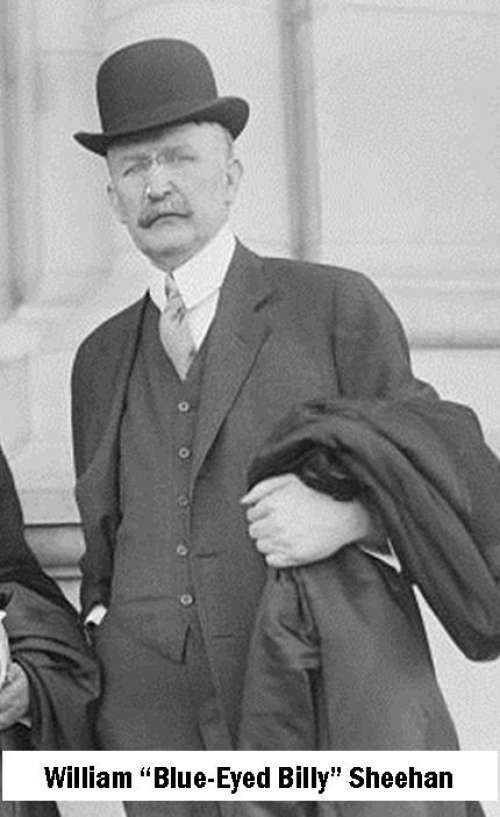


As the train slowly pulled away from the Buffalo station in the early morning hours of September 16th, 1901, newly sworn-in President Theodore Roosevelt could have looked to his right and caught a glimpse of Buffalo’s First Ward. He would’ve looked over an urban landscape buzzing with activity and industry along the Buffalo River. The people, problems, and politics of the First Ward were both unique to early 20th century Buffalo, yet representative of many of the issues that informed Roosevelt’s presidency and progressivism.
Author Tim Bohen presented this image of Roosevelt slowly passing the First Ward during his entertaining discussion of the history and people of the neighborhood at the Site on Wednesday, October 27th. Bohen is the author of Against the Grain: The History of Buffalo’s First Ward, and throughout his presentation Bohen explained the distinct history of one of Buffalo’s oldest neighborhoods.
Historically, the First Ward has been overwhelmingly an Irish Catholic neighborhood, and Bohen offered several explanations for this continuity. Geography plays a part: the neighborhood is something of an island within the city, surrounded by borders both natural (the Buffalo River) and man-made (railroad lines). Furthermore, Bohen explained that the First Ward was always more than a neighborhood – it was primarily a political entity within the city.
According to Bohen, politics was “the air the Ward breathes.” One of the most memorable political figures to emerge out of the First Ward was William “Blue-Eyed Billy” Sheehan. Sheehan was an influential politician in the Ward in 1880s and 1890s and a major behind-the-scenes player in Democratic Party politics as well. Sheehan was perfectly comfortable using strong-arm tactics to influence voting within the First Ward. To illustrate, Bohen recounted the story of the scandalous 1893 city elections. Sheehan hired ex-convicts and former boxers to rough up supporters of an incumbent (and fellow First Ward native) named Jack White. In addition, Sheehan used his own political influence to have liquor licenses revoked from pro-Jack White saloon owners.
Later on, “Blue-Eyed Billy” found his way to even greater political influence. He served two years as the Lieutenant Governor of New York, and even after leaving that office retained a large amount of influence within the Party. In this era before endless primaries and fundraising, a small cabal of political insiders selected major party candidates for President. After finishing up his term as Lt. Governor of New York, Sheehan opened a successful law firm in New York with Alton B. Parker. Not coincidentally, when Democratic Party leaders – including Sheehan - met to choose their candidate in 1904, Alton B. Parker was the nominee.
Though we have no record of TR ever meeting face-to-face with “Blue-Eyed Billy” Sheehan, we might correctly say the two were political opponents. In a very literal sense, Roosevelt ran for the Presidency in 1904 against the handpicked choice of Sheehan. In a more indirect sense, Roosevelt’s progressive view of politics stood in direct contrast to the strong-arm, behind-closed-door nature of Sheehan’s politics.
Another example provided by Bohen highlights TR’s progressivism in relation to the politics of the First Ward. During Roosevelt’s year as Governor of New York, he had to contend with a major strike in the First Ward. In 1899 grain scoopers in the First Ward went on strike in opposition to William “Fingy” Conners, who controlled labor in the mills and silos. Rather than allow for Conners and others to call in militia, Governor Roosevelt intervened via the State Arbitration Board. As Bohen pointed out, this was in keeping with Roosevelt’s progressivism as a middle ground between unregulated capitalism and socialism.
Bohen’s talk was filled with the history and characters that made up the First Ward for over a century between the 1840s and the 1940s, and punctuated with some great questions and answers from the attendees. Our sincere thanks again to Tim for bring this story to the TR Site.
-- Paul J. Zwirecki, Ph.D., Bookkeeper/Social Media Manager
_________________
Image from the Library of Congress Prints and Photographs Division Washington, D.C. ~ http://www.loc.gov/pictures/item/ggb2005015752/
This blog and the TR Site’s “Artifact-of-the-Month” program is part of a larger project made possible by the New York State Council on the Arts (NYSCA) with the support of Governor Andrew Cuomo and the New York State Legislature.

The Theodore Roosevelt Inaugural National Historic Site is operated by the Theodore Roosevelt Inaugural Site Foundation, a registered non-profit organization, through a cooperative agreement with the National Park Service.
© 2026 | All Rights Reserved
641 Delaware Avenue, Buffalo, NY 14202 • (716) 884-0095
Website by Luminus
